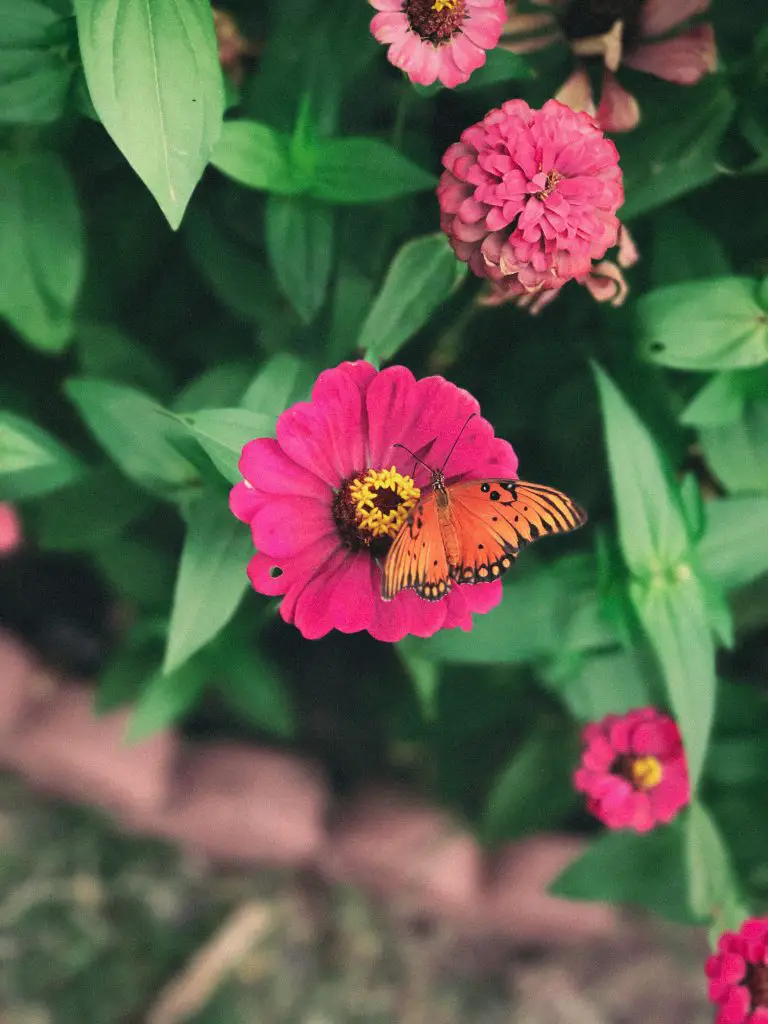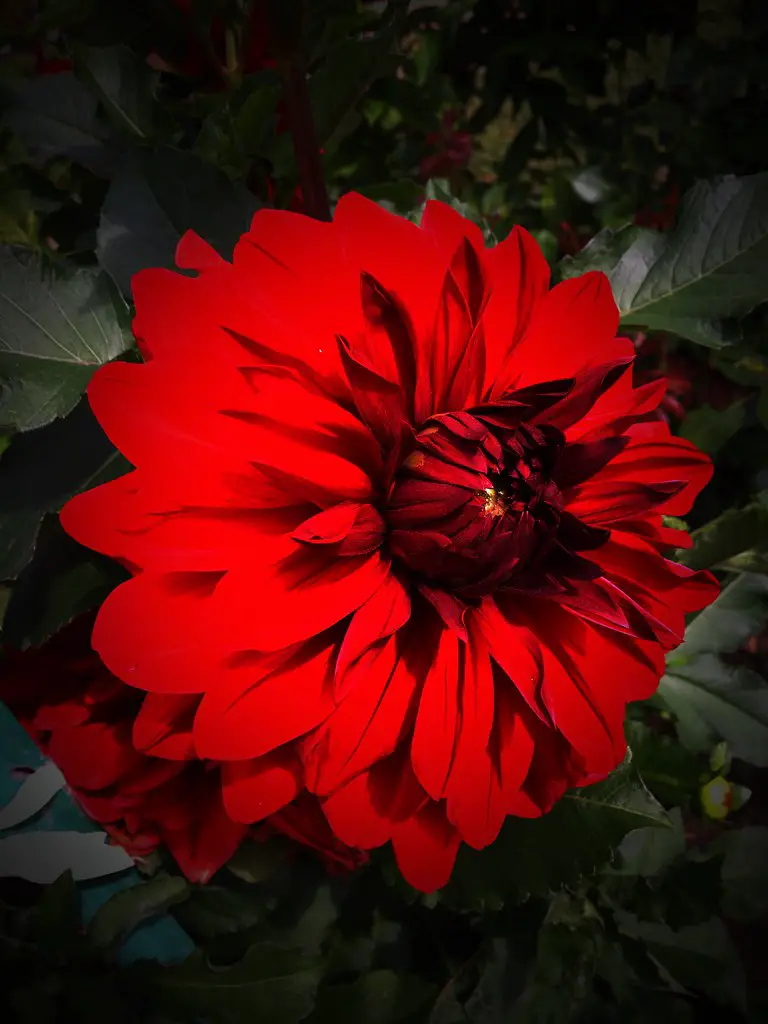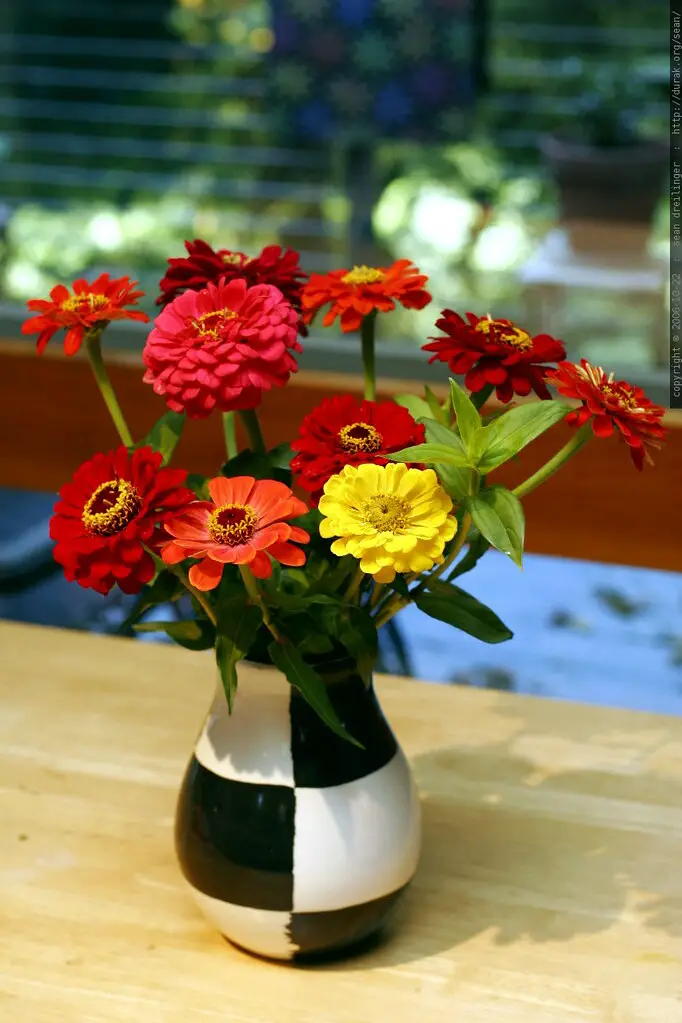Do Zinnia Seeds Need Light To Germinate? Zinnias are a popular flowering plant that is often used in cottage gardens to bring a splash of color to the garden. To ensure that there is a plentiful supply of zinnia plants available many gardeners raise the plants from seeds as it is relatively cheap to do. However, when doing this one of the most common questions that comes up is do zinnia plants need light to germinate?
Zinnia seeds do require light to germinate and this is one of the reasons that zinnias are known to self-seed readily. If you are planting them at home the seeds need to be either placed on the surface of the soil or at a depth of less than a quarter of an inch as this will enable light to still penetrate the soil to that depth.
To increase the chances of the seeds germinating it is important to ensure that they are in good contact with the soil as such most experienced gardeners recommend sprinkling their zinnia seeds across the surface of the soil and then pressing them into the surface of the soil which ensures good contact with soil.

About Zinnias
Zinnias are considered one of the most rewarding summer flowers to grow in a cottage garden because they produce brilliant colors over an extended period of time which usually starts from early summer and lasts all the way through to the first frost of the season.
The plants are typically between 1 and 3 feet tall depending upon the specific variety that is being grown. The flowers vary between single and double petal varieties with most varieties producing a large number of blooms throughout the season.
In terms of growing Zinnias, they are extremely easy to grow and as mentioned earlier in the article they will reseed readily. Like most flowering plants they prefer a sunny location with moist free-draining soil with plenty of nutrients.
Zinnias are highly drought-tolerant and do very well in locations that have extremely hot summers’ provided that the plant has become established before the heat really kicks in. However, for the flowers to perform at their very best it is important to ensure that they are not crowded to allow good air circulation around the plants as they are susceptible to powdery mildew.

When To Plant Zinnia Seeds
The best time to plant zinnia seeds to maximize the length of the flowering period is approximately 4 to 6 weeks prior to the last frost of the season. At this time of year, the plants need to be planted in a seed tray that is stored in a warm frost-free location indoors.
When planting the seeds it is important to use a specific seed-raising mixture rather than using garden soil or compost as this will provide the ideal environment to get the seedlings going as quickly as possible. However, when putting the soil into the seed tray it is important to firm it down to form solid plugs in the individual cells as this will make it significantly easier to transplant the plants later on by minimizing root disturbance.
How To Transplant Zinnia Seedlings Into The Garden
Once the zinnia seedlings have reached a reasonable size they can be planted out into the garden only after any risk of frost has passed. To avoid any problems with overcrowding of the plants as they mature the seedling should ideally be placed approximately 2 to 3 ft apart as most zinnias will reach a width of somewhere between 2 or 3 ft when they are mature.
Before planting the seeds into the soil it is advisable to dig in extra bags of compost to ensure that they have plenty of nutrition and also pre-soak the soil as this will ensure that seedlings get off to a rapid start. Once the seedlings are in position is important to apply a thick layer of mulch and sprinkle snail bait around the plants as the seedlings can be susceptible to attack early on.

Caring For Zinnia Plants
Zinnia plants do not require a great deal of maintenance once the seedlings have been established other than ensuring that the plants remain moist and the area in which the plants grow is kept weed-free.
However, to ensure that the plants look their very best in the garden it is recommended that you do provide some level of support to the plant to ensure that it remains upright. Many gardeners traditionally use garden stakes, however, I find that a tomato cage also works very well or alternatively using homemade u-shaped supports which are less intrusive than the other options mentioned.
U-supports are made out of wire by bending the wire in half around a tree to create a u-shape. Then the ends of the wires are bent down at a 90-degree angle which then serves as the ends that go into the ground allowing the curved part of the support to cradle the plant as it gets larger in size.

If you live in an area that is susceptible to powdery mildew it is advisable to spray the plant with a 50/50 milk solution in late spring before powdery mildew becomes a problem. Milk has been shown in academic studies to help retard the spread and development of powdery mildew throughout a season however it will not kill the spores that cause the problem so it is most effective as a precautionary treatment rather than a cure. To read more about this click here.
Once the plants begin to produce flowers it is important to ensure that you regularly pick them and also deadhead any spent flowers as this will encourage the plant to continue to produce more blooms throughout the season.
To ensure that you have plants for the Following season it is also advisable to collect some of the dry flower heads towards the end of the season and store them in a paper bag.
I hope you found this article useful and have great success growing zinnias at home in your own garden. If you have any additional comments or questions please leave them in the section below.
Relevant Articles
Are Zinnia And Dahlias The Same Plant? What’s The Difference?
How To Tell The Difference Between Lavender And Russian Sage (Are They The Same?)
Are Foxgloves Poisonous? Can You Touch Them?
